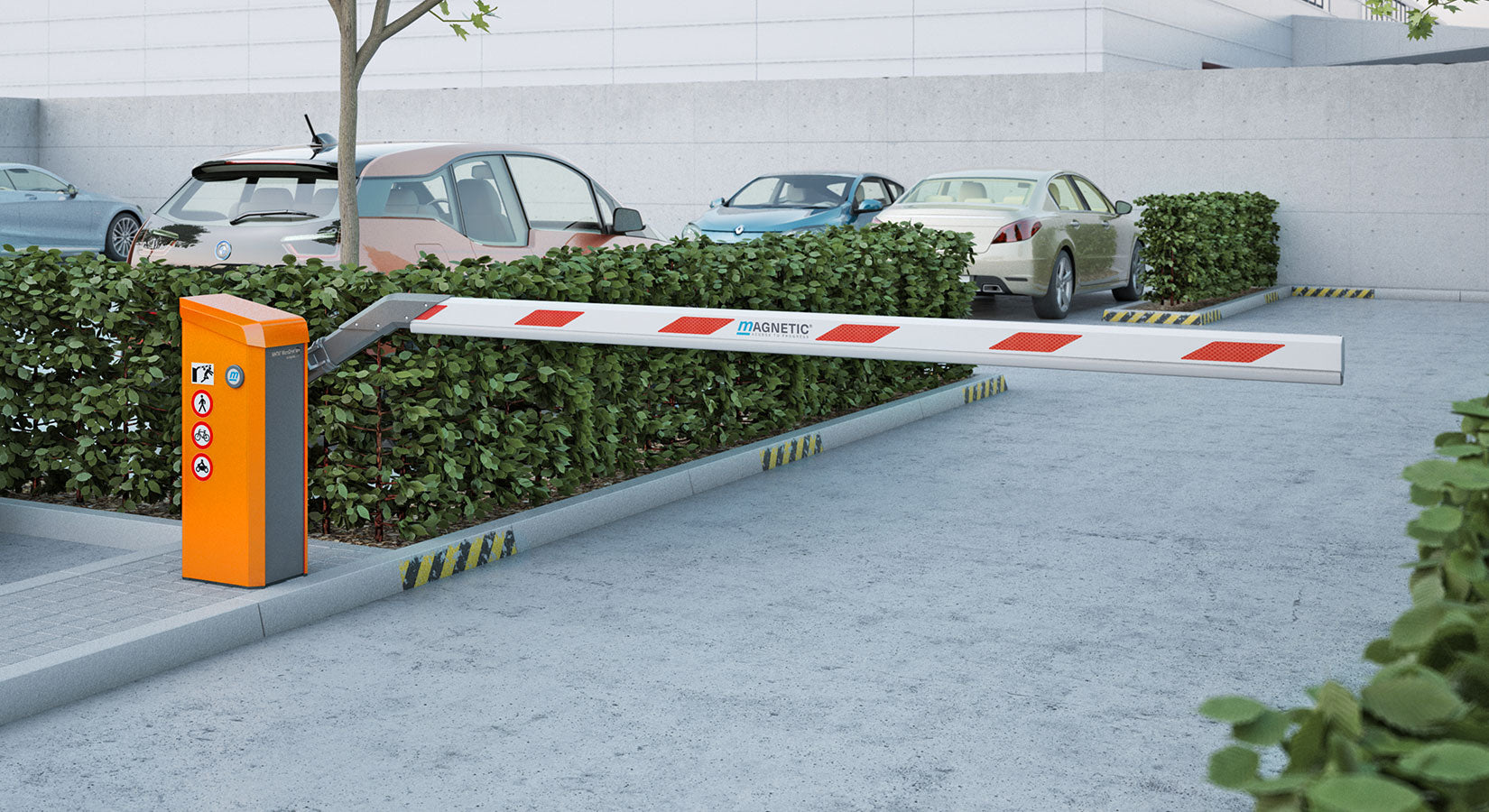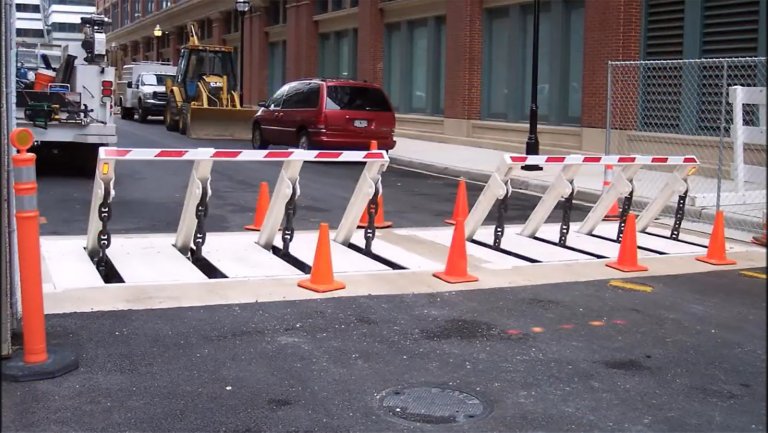Our Wedge Barriers Diaries
7 Easy Facts About Wedge Barriers Explained


18 might be done quicker, easily, and cost effectively. FIG. In particular personifications, the anchor 30 might be a steel framework consisting of plates, beams(e. g., I-beams ), and/or various other structures that are protected within the structure 14, which might be concrete. At the surface area 12, a top side 28 of the anchor 30 might go to the very least partially subjected
, therefore enabling the accessory of the barrier 10 to the anchor 30. g., threaded openings)in one or more light beams or plates of the support 30 might be exposed to the surface 12. In this manner, bolts 32 or various other mechanical bolts might be utilized to safeguard the obstacle 10 to the support 30. As the barrier 10 is mounted to the surface area 12 of the structure 14, collection of particles and other material beneath the obstacle might be decreased, and parts of the bather 10 may not be revealed to listed below grade atmospheres. As shown by recommendation character 52, the lifting mechanism 50 includes components disposed beneath the wedge plate 16. The components 52 under the wedge plate 16 might include an electromechanical actuator, a camera, one or more camera surfaces, and so forth. Additionally, the lifting mechanism 50 includes a springtime setting up 54
The springtime pole 58 is combined to a camera(e. g., cam 80 shown in FIG. 4) of the training device 50. The springs 60 disposed regarding the springtime rod 58 are held in compression by springtime sustains 62, including a fixed springtime support 64. That is, the set springtime assistance 64 is taken care of about the foundation 14 and the rest of the bather 10.
The Wedge Barriers Diaries
g., spring assistance 65 )may be dealt with to completion of the spring pole 58 to allow compression of the springs 60. As the springs 60 are pressed in between the springtime supports 62, the spring assembly 54 produces a pressure the original source acting upon the cam paired to the springtime pole 58 in an instructions 66. As an example, the continuing to be pressure related to
the camera to release the wedge plate 16 might be supplied by an electromechanical actuator 84 or other actuator. The spring assembly 54 and the actuator 84(e. g., electromechanical actuator)might operate together to translate the web cam and lift the wedge plate 16.
As stated over, the springtime setting up 54 puts in a constant pressure on the cam, while the electromechanical actuator might be regulated to put in a variable force on the webcam, therefore making it possible for the lifting and lowering( i. e., releasing and withdrawing )of the wedge plate 16. In particular embodiments, the constant pressure used by the spring setting up 54 may be flexible. g., electromechanical actuator) is disabled. As will certainly be valued, the spring setting up 54 may be covered and secured from particles or various other components by a cover plate(e. g., cover plate 68 displayed in FIG. 4) that may be significantly flush with the raised surface area 38 of the structure 14. As stated above, in the deployed setting, the wedge plate 16 serves to block gain access to or travel beyond the barrier 10. The obstacle 10(e. g., the wedge plate 16 )may block pedestrians or vehicles from accessing a building or pathway. As discussed over, the barrier 10 is affixed to the support 30 secured within the foundation 14,

front braces 71. Because of this, the linkage settings up 72 might pivot and turn to enable the collapse and extension of the affiliation assemblies 72 throughout retraction and deployment of the bather 10. The link settings up 72 reason activity of the wedge plate 16 to be limited. If an automobile is traveling in the direction of the deployed wedge plate 16(e. For example, in one situation, the safety and security legs 86 may be extended duringmaintenance of the barrier 10. When the security legs 86 are deployed, the security legs 86 support the weight of the wedge plate 16 against the surface 12. Consequently, the training mechanism 50 might be shut off, serviced, removed, check my blog changed, and so forth. FIG. 5 is partial perspective view of a personification of the surface-mounted wedge-style obstacle 10, highlighting the webcam 80 and the camera surface areas 82 of the lifting mechanism 50. Particularly, two web cam surfaces 82, which are referred to as reduced camera surface areas 83, are positioned below the web cam 80. The reduced cam surfaces 83 might be taken care of to the surface area 12 (e. As an example, the lower camera surface areas 83 and the placing plate 85 may develop a solitary item that is safeguarded to the anchor 30 by bolts or other mechanical bolts. In addition, two web cam surface areas 82, which are referred to as upper camera surface areas 87, are placed above the camera 80 and coupled to (e. In other embodiments, interfering layers or plates may be positioned in between the surface 12 and the reduced web cam surfaces 83 and/or the wedge plate 16 and the top camera surface areas 87 As discussed over, the web cam
80 equates along the webcam surfaces 82 when the wedge plate 16 is lifted from the withdrawed placement to the released setting. In addition, as stated over, the springtime assembly 54 (see FIG. 3 )may supply a pressure acting upon the web cam 80 in the instructions 102 via spring rod 58, which may minimize the force the electromechanical actuator 84 is needed to relate to the cam 80 in order to activate and raise the wedge plate 16. 1 )to the deployed position(see FIG. 4). As revealed, the camera 80 includes track wheels 104(e. g., rollers), which get in touch with and convert along the cam surfaces 82 during operation.